How Abzu’s art creates the dream of scuba diving

Hundreds of thousands of fish swarm the screen as my diver arcs into the centre of a bait ball, merging with the roiling mass of fins and faces, before popping out on the other side. The sheer number of moving objects on the screen is momentarily overwhelming. Abzu revels in moments like this, showcasing technical and aesthetic mastery via a digital sea packed with beautiful things to watch.
“I always try to communicate the game’s core ideas through the visual style,” explains Giant Squid’s creative director, Matt Nava. “Abzu is about the dream of scuba diving – we wanted to deliver the overwhelming sense of majesty, awe and grandeur that one experiences when diving in the sea.”
The goal of Abzu’s art was thus not to offer a photorealistic underwater world, but one which evoked the sense of that world. “The way that we represented sea creatures and environments are meant to be iconic and symbolic rather than realistic, the style is an attempt to transport the player into a dream of the ocean.”
Abzu’s aesthetic is a mixture of realism and simplification. All of the creatures are based on animals in the real world but their forms are streamlined. They represent a type rather than an individual.
“Reality is full of detail and is often hard to visually parse,” says Nava. “In Abzu, there are hundreds of thousands of elements on the screen – huge shoals of fish, fields of seagrass, forests full of kelp leaves. We had to create a visual style that could both support identifiable species of fish and also not become pure noise when thousands of creatures fill the screen.”
Denne historien er fra May 2019-utgaven av PC Gamer.
Start din 7-dagers gratis prøveperiode på Magzter GOLD for å få tilgang til tusenvis av utvalgte premiumhistorier og 9000+ magasiner og aviser.
Allerede abonnent ? Logg på
Denne historien er fra May 2019-utgaven av PC Gamer.
Start din 7-dagers gratis prøveperiode på Magzter GOLD for å få tilgang til tusenvis av utvalgte premiumhistorier og 9000+ magasiner og aviser.
Allerede abonnent? Logg på

A New Dawn - The rise, fall and rise again of PC Gaming in Japan
The so-called 'Paso Kon' market (ie katakana's transliteration of 'Pasonaru Computa') in Japan was originally spearheaded in the 1980s by NEC's PC-8800 and, later, its PC-9800.
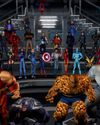
MARVEL: ULTIMATE ALLIANCE
Enter the multiverse of modness.
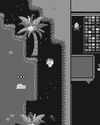
SLIDES RULE
Redeeming a hated puzzle mechanic with SLIDER
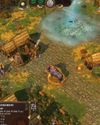
GODS AND MONSTERS
AGE OF MYTHOLOGY: RETOLD modernises a classic RTS with care

PHANTOM BLADE ZERO
Less Sekiro, more Wo Long: Fallen Dynasty
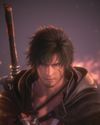
STARR-MAKING ROLE
Final Fantasy XVI's BEN STARR talks becoming a meme and dating summons

THIEF GOLD
Learning to forgive myself for knocking out every single guard.

HANDHELD GAMING PCs
In lieu of more powerful processors, handhelds are getting weirder
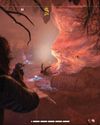
FAR FAR AWAY
STAR WARS OUTLAWS succeeds at the little things, but not much else shines
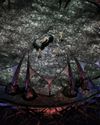
FINDING IMMORTALITY
Twenty-five years on, PLANESCAPE: TORMENT is still one of the most talked-about RPGs of all time. This is the story of how it was created as a ‘stay-busy’ project by a small team at Black Isle Studios